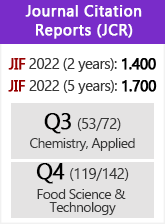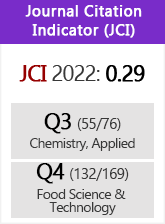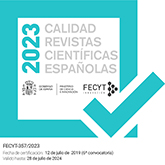Study of water deficit conditions and beneficial microbes on the oil quality and agronomic traits of canola (Brassica napus L.)
DOI:
https://doi.org/10.3989/gya.0572191Keywords:
Drought, Mycorrhizal Symbiosis, Oil Yield, Rapeseed, Unsaturated Fatty AcidAbstract
Water deficit stress is one of the major limiting factors that adversely affect plant growth and yield production. Some rhizosphere bacteria are known to promote plant growth in such stressful conditions. To study the response of quantifying canola growth, yield and yield components, to root colonization by two species of mycorrhizal fungi, a two-year field experiment was conducted at the research farm of Zanjan University. The main plot conditions were irrigation at 85% (S1), 70% (S2) and 55% (S3) of field capacity which were defined as no stress, mild and severe stress. The subplot treatments included three levels of mycorrhizal inoculation: non inoculation (control), G. Mosseae and G. Intraradices. The results showed that regardless of water deficit stress, colonized plants produced more biomass, seed and oil yield than non inoculated plants. Water deficit stress reduced the RWC and oil percentage of the seeds, although mycorrhizal improved these traits. Water deficit strikingly decreased the linoleic acid content in the seeds in contrast with increased stearic, oleic, arachidic and linolenic acids in the canola seeds. The presence of bacteria increased the seed oil percentage, oleic and linoleic contents. However, it decreased arachidic, particularly when the plants were subjected to water deficit stress.
Downloads
References
Adesemoye AO, Ugoji EO. 2009. Evaluating Pseudomonas aeruginosa as plant growth-promoting rhizobacteria in West Africa. Arch. Phytopathol. Plant. Prot. 42, 188-200. https://doi.org/10.1080/03235400601014791
Ahemad M, Kibret M. 2014. Mechanisms and applications of plant growth promoting rhizobacteria: current perspective. King. Saud. Univ. Sci. 26, 1-20. https://doi.org/10.1016/j.jksus.2013.05.001
Anjum S, Xie X, Wang L, Saleem M, Man C, Lei W. 2011. Morphological, physiological and biochemical responses of plants to drought stress. J. Afr. Agric. Res. 6, 2026-2032.
Arora NK, Kang SC, Maheshwari DK. 2001. Isolation of siderophore-producing strains of Rhizobium meliloti and their biocontrol potential against Macrophomina phaseolina that causes charcoal rot of groundnut. Curr. Sci. 81 (6), 673-677.
Arvin P, Vafabakhsh J, Mazaheri D, Noormohamadi Gh, Azizi M. 2012. Study of Drought Stress and Plant Growth Promoting Rhizobacteria (PGPR) on Yield, Yield Components and Seed Oil Content of Different Cultivars and Species of Brassica Oilseed Rape. Ann. Biol. Res. 3 (9), 4444-4451.
Aslam MN, Nelson MN, Kailis SG, Bayliss KL, Speijeres J, Cowling WA. 2009. Canola oil increases in polyunsaturated fatty acids and decreases in oleic acid in drought-stressed Mediterranean-type environments. Plant Breeding. 128, 348-355. https://doi.org/10.1111/j.1439-0523.2008.01577.x
Banchio E, Bogino PC, Zygadlo J, Giordano W. 2008. Plant growth promoting rhizobacteria improve growth and essential oil yield in Origanum majorana L. Biochem. Syst. Ecol. 36, 766-771. https://doi.org/10.1016/j.bse.2008.08.006
Baux A, Hebeisen T, Pellet D. 2008. Effects of minimal temperatures on low-linolenic rapeseed oil fatty acid composition. Eur. J. Agron. 29, 102-107. https://doi.org/10.1016/j.eja.2008.04.005
Bouwmeester HJ, Roux C, Lopez-Raez JA, Becard G. 2007. Rhizosphere communication of plants, parasitic plants and AM fungi. Trends. Plant. Sci. 12, 224-230. https://doi.org/10.1016/j.tplants.2007.03.009 PMid:17416544
Budge SM, Barry C. 2019. Determination of squalene in edible oils by transmethylation and GC analysis. MethodsX. 6, 15-21. https://doi.org/10.1016/j.mex.2018.12.001 PMid:30596025 PMCid:PMC6308249
Casanovas EM, Barassi CA, Sueldo RJ. 2002. Azospirillum inoculation mitigates water stress effects in maize seedlings. Cereal. Res. Commun. 30, 343-350. https://doi.org/10.1007/BF03543428
Chen J, Xu W, Velten J, Xin Z, Stout J. 2012. Characterization of maize inbred lines for drought and heat tolerance. J. Soil. Water. Conserv. 67, 354-364. https://doi.org/10.2489/jswc.67.5.354
Cohen AC, Travaglia CN, Bottini R, Piccoli PN. 2009. Participation of abscisic acid and gibberellins produced by endophytic Azospirillum in the alleviation of drought effects in maize. Botanique 87, 455-462. https://doi.org/10.1139/B09-023
Creus CM, Sueldo RJ, Barassi CA. 2004. Water relations and yield in Azospirillum-inoculated wheat exposed to drought in the field. Can. J. Bot. 82, 273-281. https://doi.org/10.1139/b03-119
Eyni-Nargeseh H, AghaAlikhani M, Shirani Rad AH, Mokhtassi-Bidgoli A, Modarres Sanavy SAM. 2020. Late season deficit irrigation for water-saving: selection of rapeseed (Brassica napus) genotypes based on quantitative and qualitative features. Arch. Agron. Soil. Sci. 66 (1), 126-137. https://doi.org/10.1080/03650340.2019.1602866
Figueiredo MFV, Burity HA, Martínez CR, Chanway CP. 2008. Alleviation of drought stress in the common bean (Phaseolus vulgaris L.) by co-inoculation with Paenibacillus polymyxa and Rhizobium tropici. Appl. Soil Ecol. 40, 182-188. https://doi.org/10.1016/j.apsoil.2008.04.005
Goksoy AT, Demirb AO, Turana ZM, Dagustu N. 2004. Responses of sunflower (Helianthus annuus L.) to full and limited irrigation at different growth stages. Field Crop Res. 87, 167-178. https://doi.org/10.1016/j.fcr.2003.11.004
Gunasekera CP, Martin LD, Siddique KHM, Walton GH. 2006. Genotype by environment interactions of Indian mustard (Brassica juncea L.) and canola (Brassica napus L.) in Mediterranean-type environments II. Oil and protein concentrations in seed. Eur. J. Agron. 25, 3-21. https://doi.org/10.1016/j.eja.2006.02.001
Huang J, Yu H, Guan X, Wang G, Guo R. 2016. Accelerated dryland expansion under climate change. Nat. Clim. Change. 6, 166-171. https://doi.org/10.1038/nclimate2837
Kaushal M, Wani SP. 2016. Plant-growth-promoting rhizobacteria: drought stress alleviators to ameliorate crop production in drylands. Ann. Microbiol. 66, 35-42. https://doi.org/10.1007/s13213-015-1112-3
Keshavarz H, Modarres-Sanavy SAM, Mahdipour Afra M. 2018. Organic and Chemical Fertilizer Affected Yield and Essential Oil of Two Mint Species. J. Essent Oil. Bear. Pl. 21 (6), 1674-1681. https://doi.org/10.1080/0972060X.2018.1497545
Kumara A, Sharma S, Mishra S. 2009. Effect of alkalinity on growth performance of Jatropha curcas inoculated with PGPR and AM fungi. Journal. Phytol. 1 (3), 177-184.
Mantelin S, Touraine B. 2004. Plant growth-promoting rhizobacteria and nitrate availability: impacts on root development and nitrate uptake. J. Exp. Bot. 55, 27-34. https://doi.org/10.1093/jxb/erh010 PMid:14623902
Martínez-Ballesta C, Moreno D, Carvajal M. 2013. The Physiological Importance of Glucosinolates on Plant Response to Abiotic Stress in Brassica. Int. J. Mol. Sci. 14, 11607-11625. https://doi.org/10.3390/ijms140611607 PMid:23722664 PMCid:PMC3709749
Mokhtassi-Bidgoli A, AghaAlikhani M, Nassiri-Mahallati M, Zand E, Gonzalez-Andujar JL, Azari A. 2013. Agronomic performance, seed quality and nitrogen uptake of Descurainia sophia in response to different nitrogen rates and water regimes. Ind. Crop. Prod. 44, 583- 592. https://doi.org/10.1016/j.indcrop.2012.09.018
Nazeri P, Shirani Rad AH, ValadAbadi SA, Mirakhori M, Hadidi Masoule E. 2018. Effect of sowing dates and late season water deficit stress on quantitative and qualitative traits of canola cultivars. Outlook. Agr. 47 (4), 291-297. https://doi.org/10.1177/0030727018793658
Pereyra MA, Garcia P, Colabelli MN, Barassi CA, Creus CM. 2012. A better water status in wheat seedlings induced by Azospirillum under osmotic stress is related to morphological changes in xylem vessels of the coleoptile. Appl. Soil. Ecol. 53, 94-97. https://doi.org/10.1016/j.apsoil.2011.11.007
Qian P, Schoenau JJ, Karamanos RE. 1994. Simultaneous extraction of available phosphorus and potassium with a new soil test: A modification of Kelowna extraction. Commun. Soil Sci. Plan. 25, 627-635. https://doi.org/10.1080/00103629409369068
Rahdari P, Hoseini SM. 2012. Drought stress. A review. Int. J. Agron. Plant Prod. 3, 443-446.
Rojas-Tapias D, Moreno-Galván A, Pardo-Díaz S, Obando M, Rivera D, Bonilla R. 2012. Effect of inoculation with plant growth-promoting bacteria (PGPB) on amelioration of saline stress in maize (Zea mays). Appl. Soil Ecol. 61, 264-272. https://doi.org/10.1016/j.apsoil.2012.01.006
Safavi Fard N, Heidari Sharif Abad H, Shirani Rad AH, Majidi Heravan E, Daneshian J. 2018. Effect of drought stress on qualitative characteristics of canola cultivars in winter cultivation. Industrial Crops and Products 114, 87-92. https://doi.org/10.1016/j.indcrop.2018.01.082
SAS Institute Inc. 2002. The SAS System for Windows, Release 9.0. Cary, NC, USA: Statistical Analysis Systems Institute.
Steen E, Kang Y, Bokinsky G, Hu Zh, Schirmer A, McClure A, Cardayre S, Keasling J. 2010. Microbial production of fatty-acid-derived fuels and chemicals from plant biomass. Nature 463, 559-562. https://doi.org/10.1038/nature08721 PMid:20111002
Verma JP, Yadav J, Tiwari NK, Lavakush SV. 2010. Impact of plant growth promoting rhizobacteria on crop production. Int. J. Agric. Res. 5, 954-983. https://doi.org/10.3923/ijar.2010.954.983
Walkley A, Black IA. 1934. An examination of Degtjareff method for determining soil organic matter, and proposed modification of the chromic acid tritation method. Soil Sci. 37, 29-38. https://doi.org/10.1097/00010694-193401000-00003
Yamamuro C, Zhu JK, Yang Z. 2016. Epigenetic Modifications and Plant Hormone Action. Mol. Plant. 9, 57-70. https://doi.org/10.1016/j.molp.2015.10.008 PMid:26520015 PMCid:PMC5575749
Zhang M, Barg R, Yin M, Gueta-Dahan Y, Leikin-Frenkel A, Salts Y, Shabtai S, Ben-Hayyim G. 2005. Modulated fatty acid desaturation via overexpression of two distinct omega-3 desaturases differentially alters tolerance to various abiotic stresses in transgenic tobacco cells and plants. Plant J. 44 (3), 361-371. https://doi.org/10.1111/j.1365-313X.2005.02536.x PMid:16236147
Published
How to Cite
Issue
Section
License
Copyright (c) 2020 Consejo Superior de Investigaciones Científicas (CSIC)

This work is licensed under a Creative Commons Attribution 4.0 International License.
© CSIC. Manuscripts published in both the printed and online versions of this Journal are the property of Consejo Superior de Investigaciones Científicas, and quoting this source is a requirement for any partial or full reproduction.All contents of this electronic edition, except where otherwise noted, are distributed under a “Creative Commons Attribution 4.0 International” (CC BY 4.0) License. You may read here the basic information and the legal text of the license. The indication of the CC BY 4.0 License must be expressly stated in this way when necessary.
Self-archiving in repositories, personal webpages or similar, of any version other than the published by the Editor, is not allowed.
















